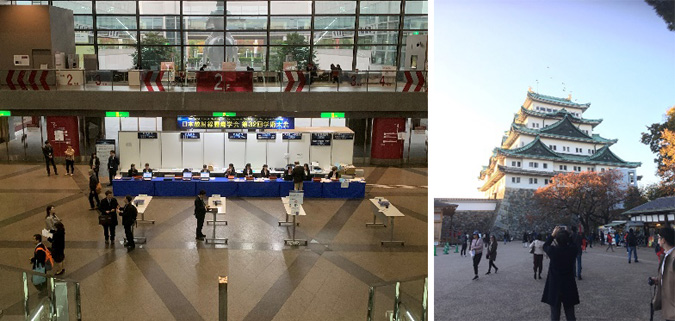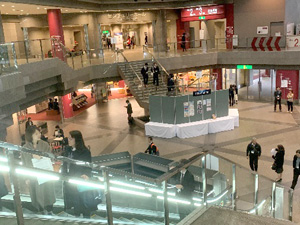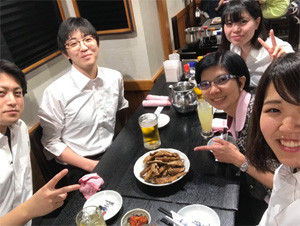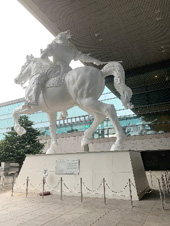2019.11.21~11.23: The 32st Annual Meeting of the Japanese Society for Radiation Oncology (JASTRO)
The 32st JASTRO held in Nagoya Congress Center, Aichi, Japan. Dr.Kadoya, Dr.Katsuta (Assistant professor), Mr.Ito (assistant), Mr.Miyasaka(D3), Mr.Ikeda (D2), Ms.Siwaporn (D1) , Ms.Hosoya (M1) and Mr.Tanabe have attended it for presentation.
■Date: November 21-23 ,2019
■Venue: Nagoya Congress Center, Aichi, Japan.
■Conference name: The 32st Annual Meeting of the Japanese Society for Radiation Oncology

Syuhei Tanabe(M1)
We are pleased to report that eight members of the Medical Physics Group, Dr. Kadoya, Dr. Katsuta, Dr. Ito, Assistant Professor, Mr. Miyasaka(D3), Mr. Ikeda(D2), Ms. Sakulsingharoj(D1), Ms. Hosoya(M1), Mr. Tanabe(M1), presented at the 32nd Annual Conference of Japanese Society of Radiation Oncology (JASTRO) held at Nagoya International Conference Center from November 21 to 23, 2019. D. student, Dr. Ikeda, Dr. Siwaporn, Dr. Ikeda, Dr. Siwaporn, and Dr. Tanabe, first-year master’s students, gave presentations.
With the development of treatment technologies such as stereotactic irradiation, IMRT, and more recently, particle therapy, it has become possible to cure patients without cutting. The theme of this year’s Annual Meeting was “Cancer Treatment without Cutting: Current Achievements and Future Prospects.
On the third day of the conference, a special lecture on AI, which is my research theme, was held, and I was able to listen to interesting talks on the current status and issues of radiotherapy using machine learning and deep learning, as well as on radiotherapy in the near future.
I have made my first oral presentation on the topic of “Development of a Predictive Model for Non-Small Cell Lung Cancer Prognosis Using Deep learning based radiomics”. It has been reported that conventional radiomics, which extracts human-defined features from tumor images, is capable of predicting prognosis, but in order to further improve the accuracy of prognosis prediction using deep learning, which has been the focus of much attention in recent years, we are optimizing the learning structure and evaluating its accuracy. Deep learning is characterized as a black box and difficult to interpret, so we hope to continue our research and deepen our understanding.
I would like to take this opportunity to thank all the professors and medical staff who provided guidance and support for my JASTRO2019 presentation.

Venue Atrium

Social gathering after the presentation

Equestrian statue in the courtyard of the venue
